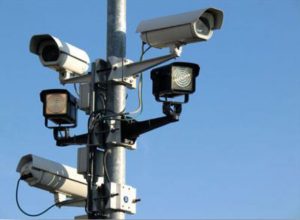School Security: Are we able to provide a safe and secure environment?
Can we provide a secure environment where we’ve taken public and school safety for granted?
When and where will the next tragedy strike?
Schools, campuses, houses of worship, recreational sites, transportation hubs, retail facilities: We once thought these locations were safe, inviolable places within our daily lives. Now, more and more, they confront us with troubling images:
- Columbine High School
- Virginia Tech University
- Northern Illinois University (Valentine’s Day)
- Aurora, Colorado, movie theater
- Sandy Hook Elementary School
- Umpqua Community College
- Pulse Orlando Night Club
- Las Vegas Strip
- Navy Yard
- LAX
- Ft. Lauderdale, Florida
- Ft. Hood, Texas
- San Bernardino, California
- Dallas, Texas
- Sutherland Springs, Texas
- Parkland, Florida, High School (Valentine’s Day)
 In 2008, I responded to the Northern Illinois University shooting, and to this day, I can still see the anguished faces at the scene. When I was deployed at the sites of the Oklahoma City bombing and the second World Trade Center attack, the look was different but the feelings were the same.
In 2008, I responded to the Northern Illinois University shooting, and to this day, I can still see the anguished faces at the scene. When I was deployed at the sites of the Oklahoma City bombing and the second World Trade Center attack, the look was different but the feelings were the same.
We have watched with great alarm the growing frequency of wanton violence at venues we once considered secure. One need only scan the news to know that now no place is immune from random acts of destruction.
Public Safety Planning and Preparedness
Ensuring public safety, including school safety and security, calls for creating a culture that plans and practices for five main factors:
- Awareness
- Security
- Safety
- Threat
- Vulnerability
 Natural surveillance and access-control measures are vital to the public safety of any facility. This becomes especially true of open-access areas such as shopping malls, places of worship and healthcare facilities, which are less likely to be openly secured in a conventional way.
Natural surveillance and access-control measures are vital to the public safety of any facility. This becomes especially true of open-access areas such as shopping malls, places of worship and healthcare facilities, which are less likely to be openly secured in a conventional way.
Key public safety factors for open-access areas include perimeters, surveillance and the presence of properly trained security/law enforcement personnel. Monitored cameras, external lighting and parking lot controls may be effective for preventing violence as well. Draw on the lessons learned from past events and compile ways to reduce the elements and items of concern.
Appropriate access control also must still allow authorized access, and you must, cooperatively, determine what your facility ultimately uses and needs. Will it be utilized by students, staff, visitors, retail customers, service personnel, or other people? Look for efficient ways to control the doors at each location and funnel people in as few areas as you can. Address and secure areas of concern with a multi-discipline or cross-functional team that can explore and understand the interdependencies of all areas – their potential threats, vulnerabilities and consequences.
 Vehicle access, perimeter control and parking close to the building require attention as well. Locks, keys, and ingress and egress are all factors.
Vehicle access, perimeter control and parking close to the building require attention as well. Locks, keys, and ingress and egress are all factors.
Apply best practices for those who need front-door access to follow federal and state access rules; however, also be aware these areas need to be monitored, as an assailant can use them for close-in surveillance and damage to your facility and injury to your staff.
Use adequate lighting, fencing and other access operations to control areas that have minimal traffic or are more susceptible to uncontrolled access to the site.
Surveillance security systems are often treated as a forensic tool (after the event has occurred), but if utilized correctly, they can deter the casual observer or the assailant. These are just a few measures you may need to look at for performing due diligence.
The key to any successful public safety program is engaging an entire organization in preparedness, planning and training for an eventuality. In today’s ever-changing society, no facility is immune: houses of worship, schools, malls, offices, campuses, factories, sports and entertainment venues, and retail settings are all potential targets. Emergency planning has no shortcuts, and success is measured in preventing and deterring violent events.
Domestic and international violence is being carried out by those who wish to cause the greatest harm to the largest population. The Oklahoma City bombing in 1995 was the work of a domestic perpetrator and the World Trade Center Attacks in 1993 and 2001 were caused by international assailants.
A threat to your facility can originate from domestic or international elements. It can also come from something in between, such as an inside attack by a disgruntled employee, a former student or someone with a grievance against the organization.
Mental Health and Human Connections

Mental health must never be overlooked. Budget cuts have unfortunately decimated our mental health programs over the years. Stigma and socialization have further perpetuated concerns about proper assistance and outreach.

Social media also have anti-socialized our communities and consequently influenced anti-social behaviors. We don’t talk and connect in personal ways as often as we once did; rather, we text and message our conversations. With social networks, 24-hour news and endless gaming, our minds can seldom quiet and relax. Stress and anxiety mount to create turbulence inside of people. As we’ve witnessed, this has become a particular concern in school safety and security.
We simply have to break the cycle of people not talking with and engaging one another. It is not solely other people’s dilemma: It’s our collective problem we have to solve. For example, I do not allow my university students to text or type in class.
We’re in This Together

Don’t try to tackle emergency planning alone. Engage all of your community’s agencies and stakeholders who would be involved in your site’s response and recovery operations. Reach out to them well before an event could happen.
Local response officials, police, fire, EMS, public health, school boards, sheriff’s offices, and state and regional fusion centers all are important supporting resources. I have trained staff at more than 45 of the nation’s 78 fusion centers. Fusion center operations offer current intelligence and awareness products for state and regional use. Your own state has fusion centers that can support you. Use them to assist you in identifying, mitigating and preparing for a possible crisis.
We really are in this together. We must communicate and coordinate across all lines as a team that cares about the safety of all innocent people. Be prepared, have a plan and practice it, look at critical inter-dependencies and evaluate your response planning.
Michael J. Fagel, PhD., CEM
EMERGENCY PLANNING CHECKLIST

- Emergency Planning
- Fire Rescue
- Law Enforcement
- School Board
- Facility Managers
- Mental Health
- Security
- Management
- Facilities
- Elected & Appointed Officials
- Collaboration
- Coordination
- Communication
- Hazard Threat-Risk-Vulnerability Assessment
ALSO REMEMBER
- Legal
- Marketing
- Transportation
- Utilities
- All Public Safety Agencies (Police, Fire, EMS, Public Works, Public Health)
- Transportation Systems
- Practice of Plan (e.g. Exercises, Tabletop Drills)
- Post-Practice Plan Improvement
- Implementation of Changes
- Further Planning, Preparation, Practice
*Note this list is not all inclusive, but rather a starting point for creating your own customized list.
Michael J. Fagel, PhD., CEM
Mike Fagel has served in public safety and corporate risk management for nearly four decades. His career spans law enforcement, fire-rescue, EMS, corporate risk & occupational safety and emergency management. He has served as an elected and appointed public official. He is an award-winning author of Crisis Management & Emergency Planning, which received the 2014 ASIS Book of the Year award. He has published six other textbooks, including his latest, Soft Targets & Crisis Management, which was nominated for book of the year. Fagel teaches at the Illinois Institute of Technology-IIT Stuart School of Business in their Master of Public Administration Program; Northern Illinois University; and the National Center for Biomedical Research & Training at LSU, Eastern Kentucky University and Aurora University. He supports DHS in numerous contractor and support roles in training and education of the nation’s first response, public health, intelligence and academic communities. He has been deployed to the Oklahoma City bombing, 2001 World Trade Center attack and Hurricane Sandy, in addition to other national and international crisis events. He is a member of the ASIS School Safety & Security Council. The opinions expressed are those of the author alone and not that of any federal, state or local agency.
